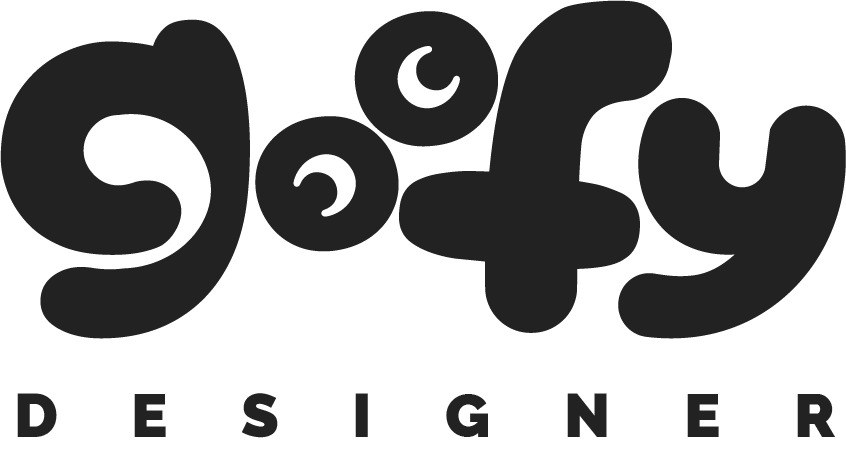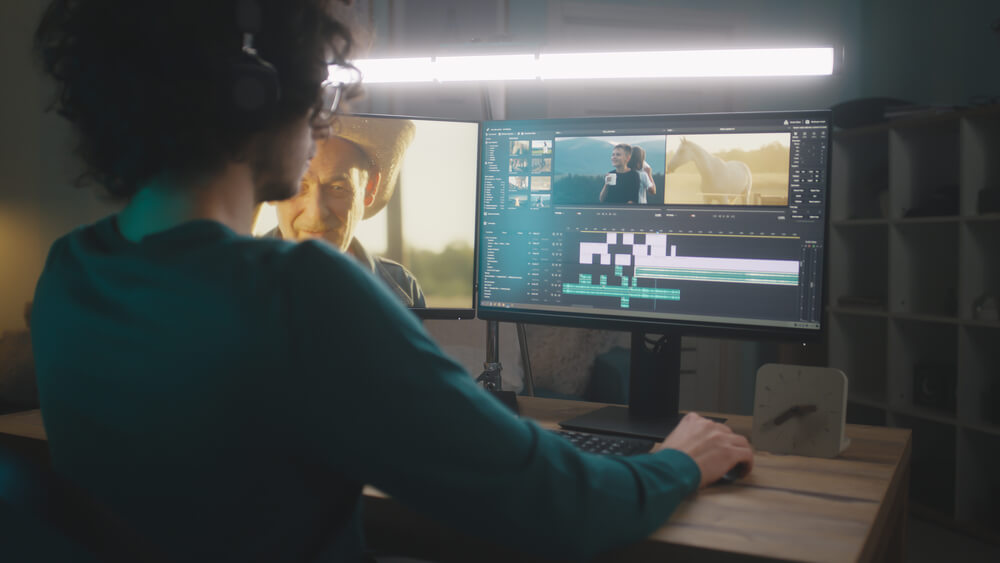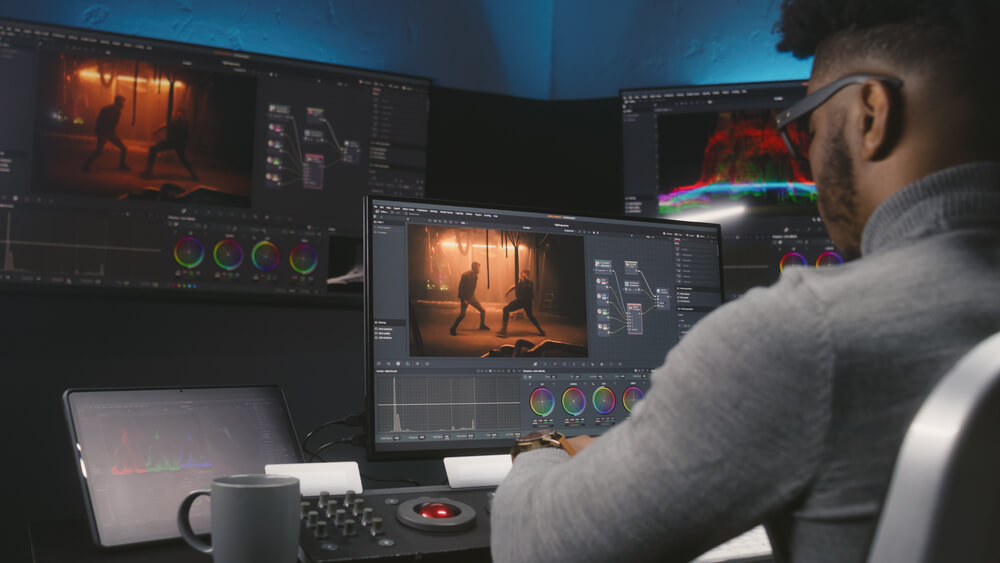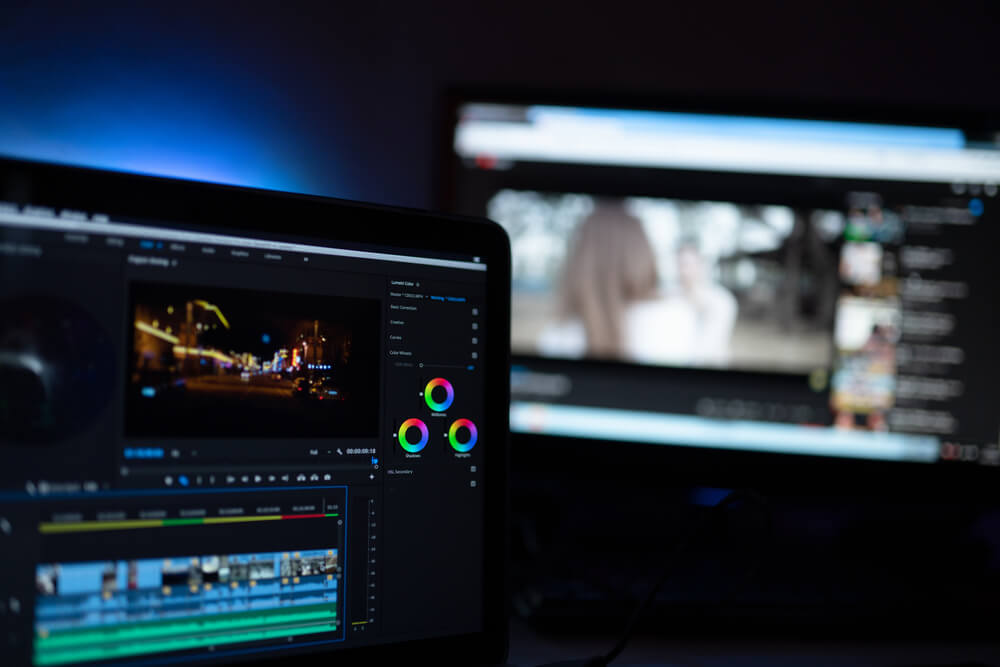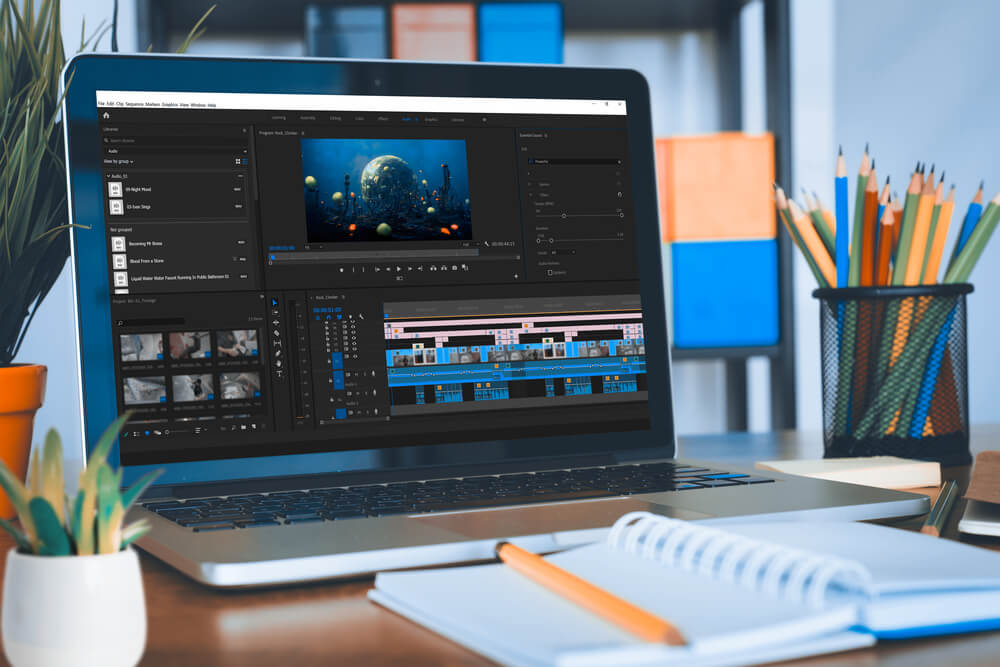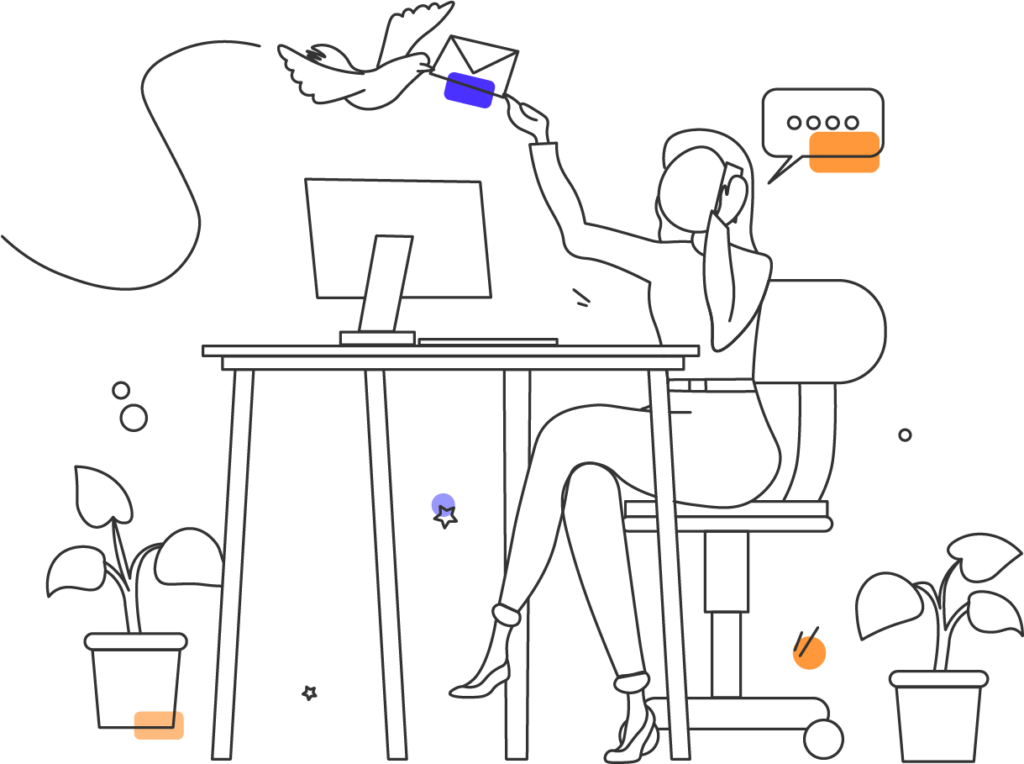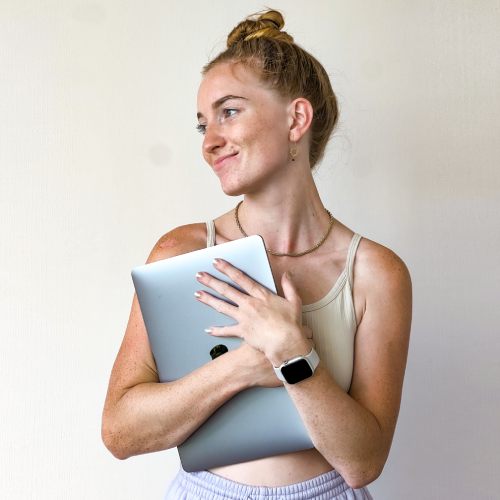Summary: In this article, I’ll go over 21 fonts, that are similar to the all-time-favorite Futura, or can be used as it’s alternative. My top picks are:
- League Spartan – closest & similar appearance
- Avenir – has a slightly different shapes, but overall feel is incredibly similar
- Twentieth Century – similar & a bit more condensed
- Poppins – a little bit wider
But that’s not all – I described a total of 21 awesome Futura alternatives and font replacements in this article – so you still have 17 more to go. Don’t forget to explore them all.
And as for Futura, let me tell you one thing you surely didn’t know & will blow your mind – it has been on the moon! The memorial plaque NASA’s astronauts left behind in 1969, the first time landing on the moon, was actually written in Futura. And yes, it should still be there all this time. How cool do you now think Futura is?
Full list: TOP 21 fonts similar to Futura
- League Spartan – Free: Google Font
- Avenir – Paid
- Twentieth Century – Paid
- Poppins – Free: Google Font
- Neuzeit Grotesk – Paid
- Gotham – Paid
- Jost – Free: Google Font
- Proxima Nova – Paid
- Montserrat – Free: Google Font
- Raleway – Free: Google Font
- Open Sans – Free: Google Font
- Nunito – Free: Google Font
- Roboto – Free: Google Font
- Lato – Free: Google Font
- Source Sans 3 – Free: Google Font
- Work Sans – Free: Google Font
- PT Sans – Free: Google Font
- Exo – Free: Google Font
- Quicksand – Free: Google Font
- Josefin Sans – Free: Google Font
- Hind – Free: Google Font
League Spartan


- Free or Paid: Free – Google Font
- How many styles: Total 9 styles = 9 upright weights (thin, extralight, light, regular, medium, semibold, bold, extrabold, black), no italics.
- Usually used for: Headings and titles. Also, commonly utilized in logos and branding due to its striking and geometric design.
- Summary: Spartan and Futura share geometric simplicity, but Spartan's style is noticeably bolder, due to its thicker lines and more pronounced forms.
Avenir


- Free or Paid: Paid – by Linotype
- How many styles: Total 12 styles = 6 upright + 6 matching oblique (light, book, roman, medium, heavy & black).
- Usually used for: High-end print and digital designs for its sleek and sophisticated style. It is also commonly used in branding and corporate identities.
- Summary: Avenir follows Futura's geometric principles but introduces a more human touch. It's like Futura's softer, more rounded sibling.
Twentieth Century


- Free or Paid: Paid – by Monotype
- How many styles: Total 16 styles = 7 classic upright weights (light, semi-medium, medium, semibold, bold, extrabold & ultrabold) + to most matching italics. Extra 4 condensed styles.
- Usually used for: Graphic design projects that require a clean & modern, geometric typeface, such as posters or brochures. Also commonly employed in digital design.
- Summary: Twentieth Century is closely linked to Futura, adopting its love for simplicity and clean design, but it allows for more pronounced curves in certain letters.
Poppins


- Free or Paid: Free – Google Font
- How many styles: Total 18 styles = 9 upright weights & 9 italics weights (thin, extralight, light, regular, medium, semibold, bold, extrabold & black).
- Usually used for: Creative designs due to its geometric design and monolinear letterforms. It's also popular for children's media and advertising.
- Summary: Poppins draws from Futura's geometric base, but stands out by introducing softer lines and extra curves, adding a touch of playfulness.
Neuzeit Grotesk


- Free or Paid: Paid – from URW Type Foundry
- How many styles: Only 6 styles = 4 normal weights (light, regular, bold & black) and 2 extra condensed styles = Cond Black & ExtCond Black. No italics.
- Usually used for: Corporate branding and design, especially in industries seeking a clean, professional appearance. Also often seen in both print and digital media.
- Summary: Like Futura, Neuzeit Grotesk leans on modern, straightforward design and clean lines. Its simplicity and minimalistic approach make it a close sibling to Futura.
Gotham


- Free or Paid: Paid – Hoefler & Co
- How many styles: Total 66 styles = But there are 16 “classic” Gotham fonts – 8 upright and 8 italics (thin, extralight, light, book, medium, bold, black & ultra). Then there are 50 more styles of this font – like Narrow, Extra Narrow or Condensed, and all of these come in different weights and both italics and upright.
- Usually used for: Corporate identities and logos. It's often used in graphic designs and architectural presentations.
- Summary: Gotham and Futura both radiate a clean, contemporary look, but Gotham injects a slight urban touch with rounded corners and wider spacing.
Jost


- Free or Paid: Free – Google Font
- How many styles: Total 18 styles = 9 upright weights & matching italics (thin, extralight, light, regular, medium, semibold, bold, extrabold, black).
- Usually used for: Modern and minimalist branding and advertising. It is also often used in digital interfaces for its excellent readability on screens.
- Summary: Jost and Futura both showcase geometric and balanced shapes. Jost takes inspiration from Futura but adds a twist by modernizing some character designs.
Proxima Nova


- Free or Paid: Paid – by Adobe
- How many styles: Total 80 styles = But there are 16 “classic” Proxima Nova fonts – 8 upright and 8 italics (thin, light, regular, medium, semibold, bold, extrabold & black). Then it has more styles – like condensed, extra condensed, wide and extra wide + all of these come in different weights & both italics and upright.
- Usually used for: Web design and digital applications because of its balance between modern proportions and geometric appearance. It's also often used in graphic design and signage.
- Summary: Like Futura, Proxima Nova is a fan of clean lines and simple forms, but it's slightly less angular than Futura, resulting in a softer overall appearance.
Montserrat


- Free or Paid: Free – Google Font
- How many styles: Total 18 styles = 9 upright weights & 9 italics (thin, extralight, light, regular, medium, semibold, bold, extrabold & black).
- Usually used for: Contemporary designs like logos and headlines. Also commonly used for website and app interfaces.
- Summary: Montserrat shares Futura's geometric essence, but it goes its own way by incorporating more rounded letterforms and generous spacing.
Raleway


- Free or Paid: Free – Google Font
- How many styles: Total 18 styles = 9 upright & 9 italics (thin, extralight, light, regular, medium, semibold, bold, extrabold & black).
- Usually used for: Elegant and stylish headings. It is also popular for use in website body text.
- Summary: Raleway, like Futura, emphasizes clean lines and simple forms, offering an elegant aesthetic with unique character traits, such as a distinct ‘W'.
Open Sans


- Free or Paid: Free – Google Font
- How many styles: Total 12 styles = 6 upright & 6 italics (light, regular, medium, semibold, bold & extrabold).
- Usually used for: Web and mobile interfaces due to its legibility at small sizes. Also, it's a popular choice for print materials.
- Summary: Open Sans and Futura prioritize clarity and readability, but Open Sans takes a more humanist approach, giving characters an open and friendly look.
Nunito


- Free or Paid: Free – Google Font
- How many styles: Total 18 styles = 9 upright & 9 italics weights (extralight, light, regular, medium, semibold, bold, extrabold, black & weight).
- Usually used for: Children's products and creative designs due to its rounded, friendly letterforms. It's also used in web and app design because of its readability.
- Summary: Nunito and Futura are both rooted in geometry. While Nunito tends to be more playful with rounded letterforms, it still retains a solid geometric base.
Roboto


- Free or Paid: Free – Google Font
- How many styles: Total 12 styles = 6 classic upright & 6 matching italics (thin, light, regular, medium, bold & black).
- Usually used for: Android OS and Google services typography. Also often used in modern website and app designs.
- Summary: Roboto features a blend of geometric and humanist characteristics, like Futura. Its modern, balanced letterforms mirror Futura's design approach.
Lato


- Free or Paid: Free – Google Font
- How many styles: Total 10 styles = 5 upright & 5 italics weights (thin, light, regular, bold & black).
- Usually used for: Corporate designs and digital media due to its semi-rounded details and structure. It's a preferred choice for user interfaces and web design.
- Summary: Lato, similar to Futura, is a blend of geometric design and humanist elements. Its semi-rounded details add a warm and organic touch.
Source Sans 3


- Free or Paid: Free – Google Font
- How many styles: Total 16 styles = 8 upright weights & 8 italics (extralight, light, regular, medium, semibold, bold, extrabold & black).
- Usually used for: User interfaces and code editing environments as it was Adobe’s first open-source font. It's also widely used in web design and digital media.
- Summary: Source Sans 3 shares Futura's emphasis on balance and proportion. It reflects the same open apertures and upright stress, mirroring Futura's approach to legibility.
Work Sans


- Free or Paid: Free – Google Font
- How many styles: Total 18 styles = 9 classic upright & 9 italics weights (thin, extralight, light, regular, medium, semibold, bold, extrabold & black).
- Usually used for: Text in digital interfaces and lower-resolution displays. It is frequently used for creating clean and minimalist designs.
- Summary: Work Sans and Futura both lean into geometric design. Work Sans' consistent stroke weight brings harmony and equilibrium to the design.
PT Sans


- Free or Paid: Free – Google Font
- How many styles: Only 4 styles = regular & regular italics + bold & bold italics.
- Usually used for: Interfaces, informative texts, and signage due to its clarity and openness. It's also seen in academic and government documents.
- Summary: PT Sans and Futura share balanced and proportionate letterforms. PT Sans adds an air of crispness and sophistication, just like Futura.
Exo


- Free or Paid: Free – Google Font
- How many styles: Total 18 styles = 9 upright weights & 9 italics (thin, extralight, light, regular, medium, semibold, bold, extrabold & black).
- Usually used for: Sci-fi and technology-related design themes because of its futuristic look. It's also commonly found in digital media and video games.
- Summary: Exo shares Futura's geometric foundation but introduces unique letterforms and extra curves for a futuristic touch.
Quicksand


- Free or Paid: Free – Google Font
- How many styles: Total 5 styles = 5 weights – only upright & no italics (light, regular, medium, semibold & bold).
- Usually used for: Display and children's products due to its rounded, friendly letterforms. It's also often used in web design and digital media.
- Summary: Quicksand, like Futura, emphasizes simplified letterforms and balanced proportions, but it also adds a sprinkle of fluidity with roundness in some characters.
Josefin Sans


- Free or Paid: Free – Google Font
- How many styles: Total 14 styles = 7 upright weights + their matching italics (thin, extralight, light, regular, medium, semibold & bold).
- Usually used for: Graphic design projects that aim for a vintage yet modern look. It is also frequently utilized in web design because of its excellent readability.
- Summary: Josefin Sans echoes Futura's geometric approach with balanced weight and proportions. Its unique approach to letter shapes sets it apart while still maintaining a clean, modern aesthetic.
Hind


- Free or Paid: Free – Google Font
- How many styles: Total 8 styles = 4 upright weights & 4 italics (light, regular, medium, semibold).
- Usually used for: Digital platforms due to its simplification for screen legibility. It is also used in print and graphic design projects.
- Summary: Hind and Futura both lean into geometric design, offering clean, balanced shapes. Hind, however, has wider character spacing, providing a more open feel to the design.
Is Futura free or paid?
Futura is generally paid font, especially for commercial use.
The rights to the Futura typeface are owned by a variety of different companies, depending on the specific version of the font and the region. The biggest player here is probably Monotype (=Linotype).
However, if you just want to use Futura on your personal computer and it came pre-installed (like on some versions of Mac OS), you typically don't need to pay extra to use it.
How many styles does Futura have?
Futura has a total of 22 styles.
- It has 12 primary fonts = 6 weights + matching obliques (light, book, medium, heavy, bold, extrabold).
- Then it has some condensed styles – both upright and oblique.
- And 2 extra fonts – Futura Black and Futura Display.
What is Futura mostly used for?
- Logos: Many companies use Futura in their logos, like Domino's Pizza, and Louis Vuitton.
- Advertising: Futura is often used in ads because its clean, modern look grabs attention.
- Book Covers & Posters: You'll see it on many book covers and movie posters, where its strong, geometric shapes really pop.
- Web & Graphic Design: Many designers use Futura for websites, apps, and digital media due to its readability on screens.
- Signage & Plaques: Futura is used for signage and plaques, like the Apollo 11 moon landing plaque!
A bit of history of Futura.
The Futura typeface was designed by Paul Renner, a German typeface designer, in the year 1927. Renner wanted to make a font that was simple, clean, and efficient, which was a big deal at the time.
He was inspired by the ideas of a famous art school in Germany called Bauhaus. The people at this school believed in making things that were practical but also looked good.
When Futura was released, it was like a breath of fresh air. It was different from the fancy and traditional fonts that were common back then. People really liked its modern and geometric look, and it quickly became incredibly popular.
Futura has been used for all sorts of things, like advertisements, company logos, and signs. And as I already told you, one of the coolest things about Futura is that it was even used on a plaque that astronauts left on the moon!
Futura has really been on the moon?
Yes, absolutely! When Apollo 11, the first manned lunar landing mission, landed on the moon in 1969, they left behind a plaque to commemorate the historic event. The plaque had the inscription: “Here men from the planet Earth first set foot upon the moon. July 1969, A.D. We came in peace for all mankind.” Guess what? The text on this plaque was set in the Futura typeface. So, yes, technically, Futura has been used on the moon!
Is it still there?
Yes – should be. There's no weather or atmosphere on the moon like we have on Earth to cause erosion or other types of decay. So, unless it's been impacted by a meteor or disturbed by subsequent lunar missions, it should be pretty much as it was when it was left there in 1969, including the Futura inscription! Do you find this as cool as I do?
Conclusion
I love old typography – back then, everything new was original. In the modern world, we have a bit too much of everything – which includes fonts. And on top of that, many of the modern fonts originate in the old classics, like Futura. But truth be told, Futura is overused. No wonder – it has been around for decades. So I completely agree that it’s a good idea to freshen up with new typefaces and beautiful alternatives.
If you want something really close to Futura, I’d try fonts like Poppins, Avenir, Twentieth Century, League Spartan, or any other from this article.
